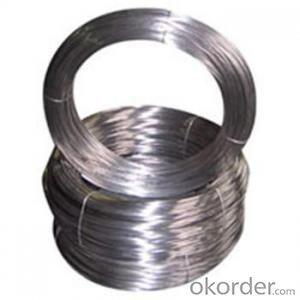Specifications
Black annealed carbon spring steel wire
Material: Q195,Q235,45,65,70, 72A, 72B, 82B, 65Mn
Diamet
Black annealed carbon spring steel wire
Material: Q195,Q235,45,65,70, 72A, 72B, 82B, 65Mn
Diameter: 0.3mm-12.0mm
Tensile Strength:
Surface treatment: bright
Packing: according to customers' requirements
1. AWS ER5356 ER4043
2. CCS, ABS, GL, BV, LR, KR, NK
3. size 0.8mm, 1.2mm, 1.4mm, 1.6mm, 2.5-5mm
4. the best price


























